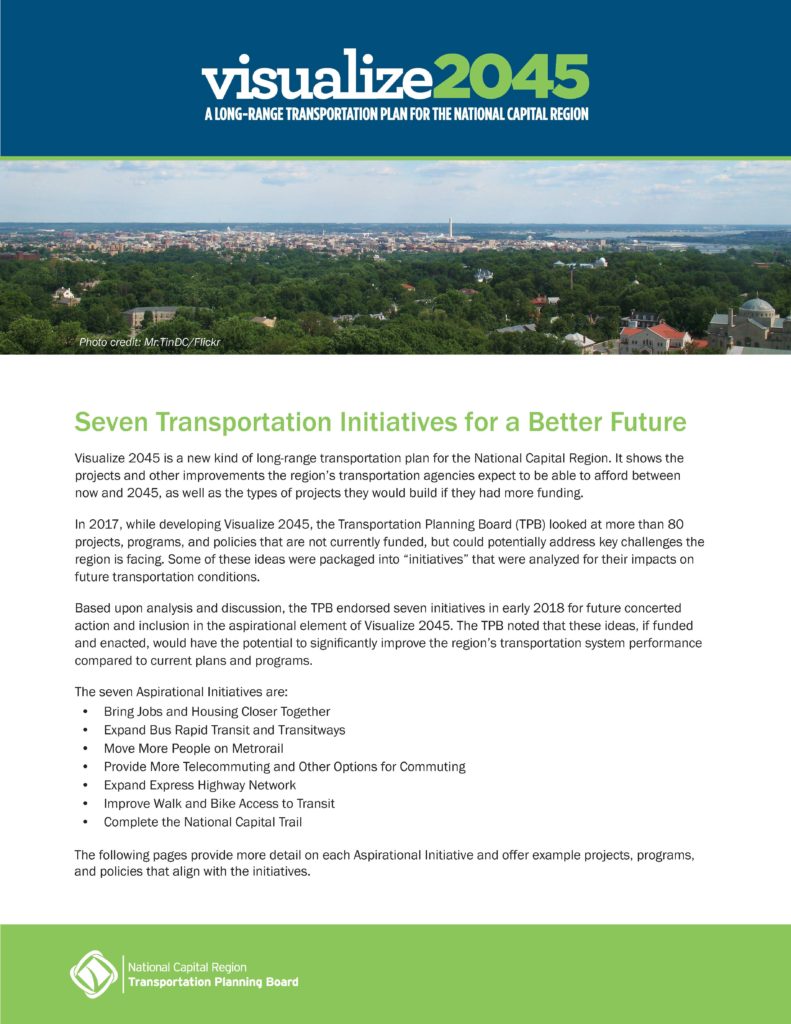TPB Synthesized Policy Framework
The TPB Synthesized Policy Framework reflects the main points from various National Capital Region Transportation Planning Board policy documents. These include the TPB Vision, Region Forward, Regional Transportation Planning and Priorities, Aspirational Initiatives, and Climate Change Mitigation Strategies. The Framework’s principles and goals should inform planning throughout the region and guide the projects, programs, and policies that are submitted for the long-range transportation plan (Visualize 2050) and Transportation Improvement Program’s constrained element and planning activities beyond the constrained element.







